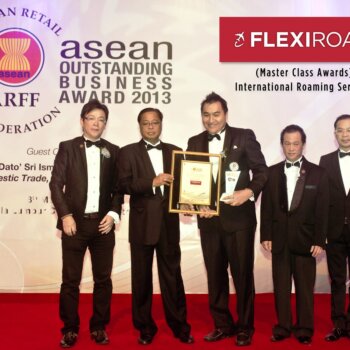The startup world has morphed into a global subculture with technology making us feel like we’re all the same – regardless of cultural or geographical differences. As a startup founder in Asia, especially if you’re based in a smaller consumer market like Singapore, you will likely include other Asian and/or global markets as part of your expansion plans. But, seller beware – just because it’s technically easy to launch a marketing campaign in other markets, doesn’t mean you can take a one-size-fits-all approach to lead generation across borders.
This becomes especially true if you’re going after customers located in the United States, the largest economy in the world. And the US isn’t just large, it’s massive: it’s 7 times the GDP of ASEAN with only half the population.
As an Asia-based startup founder myself, and one who has business customers across the US and the rest of the world, I have spent hundreds of thousands of dollars learning through trial and error how to engage customers in new markets. Even for people like me who come from global backgrounds (born in the US, childhood in Japan and Singapore, education in the US, China and England, and a career in Japan and the Philippines) – it takes conscious and disciplined effort to create and execute culturally-appropriate marketing campaigns.
So, if you’re an Asian startup, and you’re thinking of going after customers in the US because you want a piece of that massive pie, here are 3 things to keep in mind as you create your US lead generation and marketing strategy:
- Keep your emails simple.
When you’re in the Philippines, you may start your emails with “Good Day!”, to be charming and friendly.
If you’re in Singapore, you may want to start your emails with “Dear” to be polite and respectful.
In Japan, you’ll want to pack a number of formalities at the beginning and end of your emails to avoid being too blunt.
The rule of thumb for emailing in the US is: don’t do any of that – especially if you’re emailing someone cold. In the same way that Americans expanding overseas need to seriously cut down on their usage of “Hey!” (I’ve seen one senior level Japanese businessman who, after receiving a “Hey Yuta!” email ask, “Is the sender angry?”), so do we in Asia need to talk their talk when we’re in their market. In the US, that often means just using someone’s first name, or, a simple “Hi” at the beginning of your communication. When in doubt, keep it simple and ditch the formality.
You don’t have to take it from me – the guys over at Yesware are experts on just about everything to do with sales emails, and they say that the goal of any email should be to get it read, and to do so there are simple formulas that you can follow time and time again to achieve just that. In a useful Yesware article – 9 Cold Email Formulas That Just Plain Work – there are some great examples of American-friendly styles such as jumping right to the point, brevity, and being assertive in asking for a meeting.
- Don’t be afraid to sell yourself.
America is a country of people who know how to sell themselves, and they expect others to do the same. In many Asian cultures, self-promotion is seen as bragging and downright bad.
“Personal branding is seen as a positive way to differentiate oneself in the American workplace,” say image and cross-cultural communication experts Dorie Clark and Andy Molinsky.
But, they go on to explain that assertive self-confidence, especially if you come from a country like China, India or Korea where modesty, composure, and self-control are more culturally valued characteristics, then it can cause significant discomfort.
Let the person you’re talking to know about your track record by referencing your experience and expertise in appropriate contexts. Excessive humility is often interpreted as a sign of low self-esteem.
One trick to overcome this is think about the wider impact that your self promotion can have – for example, how your amazing product will truly benefit the customer, or, the benefit to your teammates and employees if you gain a new customer.
- Speak up.
In many Asian cultures, listening is highly valued. In Japan, sometimes the most silent person in a meeting is seen as the wisest, smartest person in the room. People assume he must be thinking, digesting, and coming up with incredible ideas.
In the US, it is often the opposite. People are encouraged from a young age to actively participate. If you watch American news channels, you may be surprised to see people raising their voices or speaking on top of each other. This is all culturally acceptable, but leaves many people who were raised in Asian cultures blindsided.
Whether or not you have a personal belief that speaking less is valued over speaking more, in the US, you shouldn’t be afraid to speak up in a sales call, at a conference, or in normal conversation. If you have a quick question, ask it. If you disagree, voice your opinion. These things can be uncomfortable at first, but they will help you build credibility with your American customers or partners.
Molinksi calls this discomfort the “liability of deference”: the fact that people from deferential, polite cultures often struggle to make their way in less hierarchical cultures.
If you’re a founder, and you have sales, marketing and customer support staff who will be switching gears to speak with US customers, it is critical to call out these cultural differences up front, so they can prepare. And purposefully practicing skills that seem uncomfortable can greatly improve the chance of successful communication with American counterparts.
Honing your approach for each market you serve is critical in your startup, and, if you’re coming from an Asian culture of interdependence and harmony, take these 3 steps today to expertly enter markets that favor individualism and assertion.





























